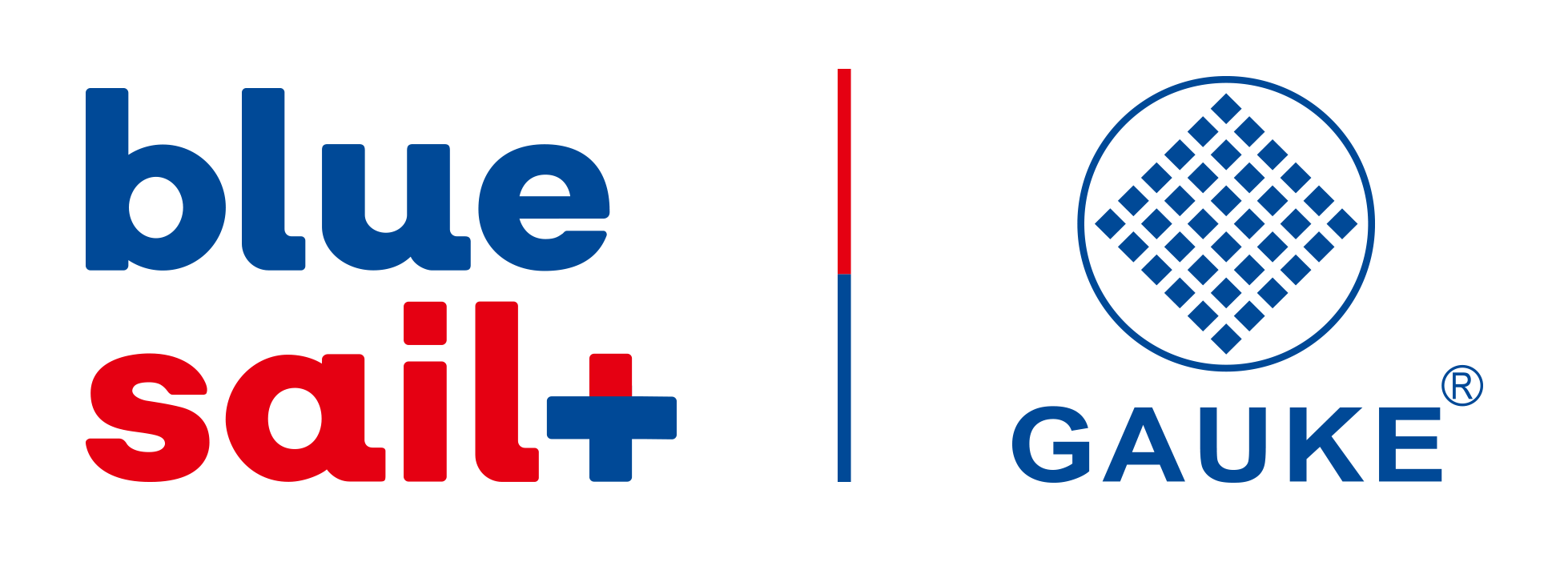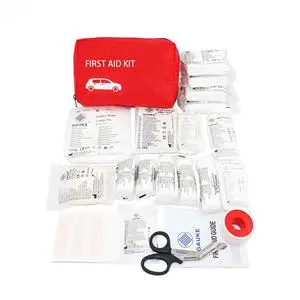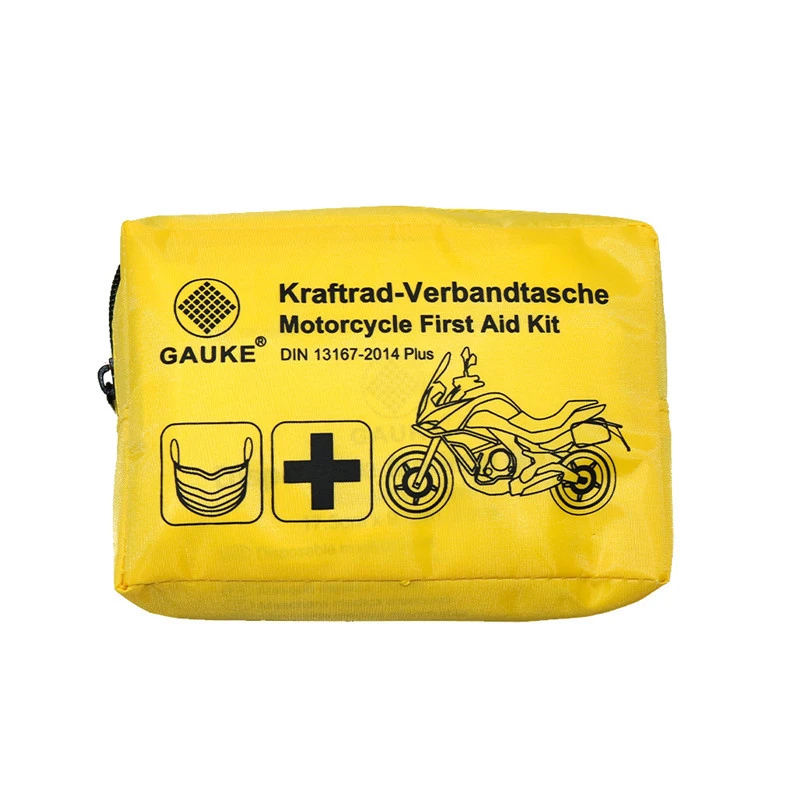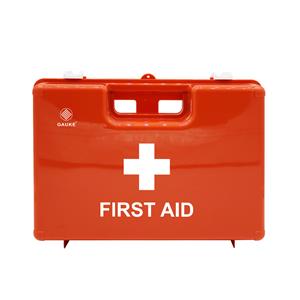What is Israeli battle dressing?
A field dressing, sometimes known as a battle dressing, is a bandage supported by troops and used to treat (mostly gunshot) wounds swiftly. A large absorbent cotton pad tied to the center of a thin fabric strip holds the pad in place. Field dressings are given in watertight, resealable packets that can be torn open to guarantee cleanliness and freshness.
Every soldier carries an immediate-use combat dressing in the field. It is customary to utilize the casualty's dressing instead of the rescuers' since the savior may need to aid another victim or require assistance himself, whereas the initial casualty's dressing will not be reused. Field dressings are a significant piece of troop security; henceforth, infantry units frequently have standard systems that specify where these things ought to be kept by the actual officers. English Army regalia were quick to have field dressing pockets. During World War I, this pocket was situated on the left front skirt of the tunic.
It was transferred to the pants with the introduction of Battledress in 1937. All things being equal, field dressings are often put on the left shoulder tie of the webbing, which can be connected with gaffer tape or conveyed in a little pocket that isn't given; however, they can be purchased from an assortment of nonmilitary personnel sources.
Field Dressing Wrappers in the Management of "Sucking" Chest Wounds
Some people use field dressing wraps to treat "sucking" wounds in the chest. Instead of pulling air down the throat and into the lung, movement of the chest draws air through the wound and into the area around the lung. For a person to breathe easily, the hole must be closed. On the battlefield, the wound can be taped to the waterproof outside of a field dressing and the clean inside placed on the wound. The package's top and sides are taped shut, but the bottom edge is uncovered. Like the victim exhales, the wrapping serves as a primitive flapper valve, preventing air from entering while allowing air to escape.
Development of the Israeli Battle Dressing
This dressing was developed in 1904 and received FDA approval in 1906. To keep it clean and safe against chemical attacks, it was handed to soldiers in a sealed brass container. The U.S. government created the Carlisle Model First-Aid Packet in 1940 to cope with wounds and deaths on the front lines. Several times throughout WWII, the Carlisle Bandage was modified.
In 1940, the United States Army approved the Carlisle Model Small First-Aid Dressing. It arrived in a waxed rectangle box with all of the necessary marks. The first aid kit was difficult to locate. The first batch of materiel for the 1940 Army expansion required the participation of around 8 million individuals. In 1956, the Medical Department decided to modify its standards and purchased tin containers (instead of brass). The upgraded version and the first Sulfanilamide Shaker Envelopes were released in the fall of 1941.
Tenite, a plastic container developed in the first few months of 1943, twisted and broke apart when used in the field. The products were wrapped in laminated paper and strengthened with aluminum or lead foil before placing them inside a waxed cardboard shell. They were also biofilm, cellophane, or polyvinyl butyral-coated on the inside. The Carlisle model of first aid dressing was around 4 inches "X2"X1" long. The pad is 7" by 4" and 1/2 inch thick when open "thick. Two long gauze tapes were also provided for tying.
The Large Carlisle kind of first-aid dressing measured 11 3/4 inches square. Simple instructions were printed in red ink on the dressing. Most packets had the phrase "Sterile" inscribed on them along with the directions. "Place the other side of the bandage against the wound; the red side is the back." The hue olive represented a "hidden" dressing. U.S. soldiers could find extensive instructions and images on healing wounds in a printed book.
How to Apply an Israeli Bandage Correctly?
Before Israeli emergency bandages were established in 1998, wounded troops were encouraged to apply direct pressure to bleeding wounds with a rock. Even though it has just been 20 years, technology has improved substantially. The rock has been replaced by a plastic pressure bar shaped like a banana. It's easy to use.
Making Use of an Israeli Bandage
Each Israeli bandage is individually wrapped in sterile, vacuum-sealed packaging when purchased. Open it up and give it a try if you've never used one before. Try not to stress over expecting to purchase another gauze if the seal on one breaks. Even though it is presently not sterile, keeping the wraps clean won't build your gamble of contamination.
As the bandage is unrolled, a white string is braided across the wrap material. If you drop the roll, the elastic wrap will not unwind and fall into the soil or other pollutants.
The string will pull through and fall out as you wrap the bandage. The bandages are not reusable because blood cannot be removed from the absorption pad; thus, you should have a spare at home.
Although the box is vacuum-sealed, there is an enormous quantity of plastic protruding from both sides, taking up a lot of room in a small, portable first aid kit. I clipped the plastic on both ends and fashioned it into a tube the same diameter as the bandage. Make sure the instructions aren't ripped off the package. Because the bandage is wrapped, there is no wasted space within the packaging.
Israeli Battle Dressing on the Chest
The sterile side of the bandage should face the incision when it is placed on the absorption pad.
As though it were a limb, wrap the wrap around your arm. Check that the packing is wrinkle- and fold-free around the incision; it should produce an airtight seal.
Wrapping the chest is similar to wrapping the arms and legs, but there are a couple of differences to remember: Although most chest wounds or punctures that generate substantial external bleeding do not result in death, internal bleeding must be treated immediately. A lung that shows burst is the most prevalent cause of mortality from treatable chest wounds. Apply a chest seal or an occlusive bandage to prevent air from entering the chest cavity through the wound. You can purchase chest seals, but an Israeli bandage will move if you don't have any.
Israeli Battle Dressing on the Abdomen
Since there are no bones in the abdomen, you don't need to put a lot of pressure on a wound there.
Wrap the absorbent pad loosely around the wound like a chest or a limb. The abdomen is covered with a bandage to keep the area clean and infection-free.
If you can, wet the pad before you use it. As the blood clots and the bandage is taken off, a dry pad will stick to the wound and cause it to open up again.
Using an occlusive dressing with an Israeli bandage can cover more of a big wound.
Israeli Battle Dressing on the Head
Pressure bandages can also be applied to the head, although creative wrapping is required to hold them in place.
The bandage may migrate upwards with scalp incisions due to the head's curvature; therefore, it must be wrapped once under the chin to maintain its position. Loop the Israeli bandage roll behind the pressure bar's top end to adjust the direction of wrapping.
Israeli Battle Dressing on the Neck
When the neck is hurt, it can hurt the airway, the blood vessels, and the cervical spine. Keep the airway open when you put a pressure bandage on a wound on the neck. Because the significant blood veins in your neck run along either side of the trachea, we worry more about severe bleeding from side neck injuries than from the front or back neck injuries.
However, the goal is to narrow the patient's blood vessels while still letting them breathe right. Place the absorbent pad under the Israeli bandage on the side of the neck where the injury is.
Recommendations & Tips for Israeli Battle Dressing
Before putting on the Israeli emergency bandage, put hemostatic gauze on the wound to stop the bleeding. This will speed up the process of clotting and put more pressure on the wound.
Put the hemostatic gauze wrapper inside the bandage, so the doctor will know what treatment was done.
Don't touch the white sterile absorption pad when you unroll the bandage. This will keep the bandage as clean as possible before putting it on the wound.
Before putting a traditional Israeli bandage on burns or other large wounds, cover the absorption pad with a B&W Ointment. This will help prevent infection and seal the wound.
Gauke Healthcare Co., Ltd Bandages Products
The items provided by Gauke Healthcare Co.; Ltd. are described in the following paragraphs: you should give them a try because their prices are affordable.
· Hospital disposable first aid nonwoven triangular bandages
· Professional blood stops hemostatic conforming gauze bandage
· Self-adhesive elastic bandage nonwoven cohesive medical cloth tape
· Trauma first aid pressure Israeli emergency bandage
· Medical 100 percent cotton gauze bandage for wound dressing
· Disposable Israeli trauma combat bandage
· Soft roller gauze PBT elastic bandage wholesale
· Elastic wound adhesive bandage wholesale supplier
· Compress bandage PBT first aid bandage
Why buy from Gauke Healthcare Co., Ltd.?
Gauke is a well-known Chinese maker of bandages. You may get wholesale cotton bandages & customized band-aids at affordable costs to assist in expanding your organization. For wound protection, the cotton material is soft, pleasant, & hypoallergenic. The Gauke bandage provider manufactures one-of-a-kind medical bandages that can absorb a substantial quantity of fluids.




